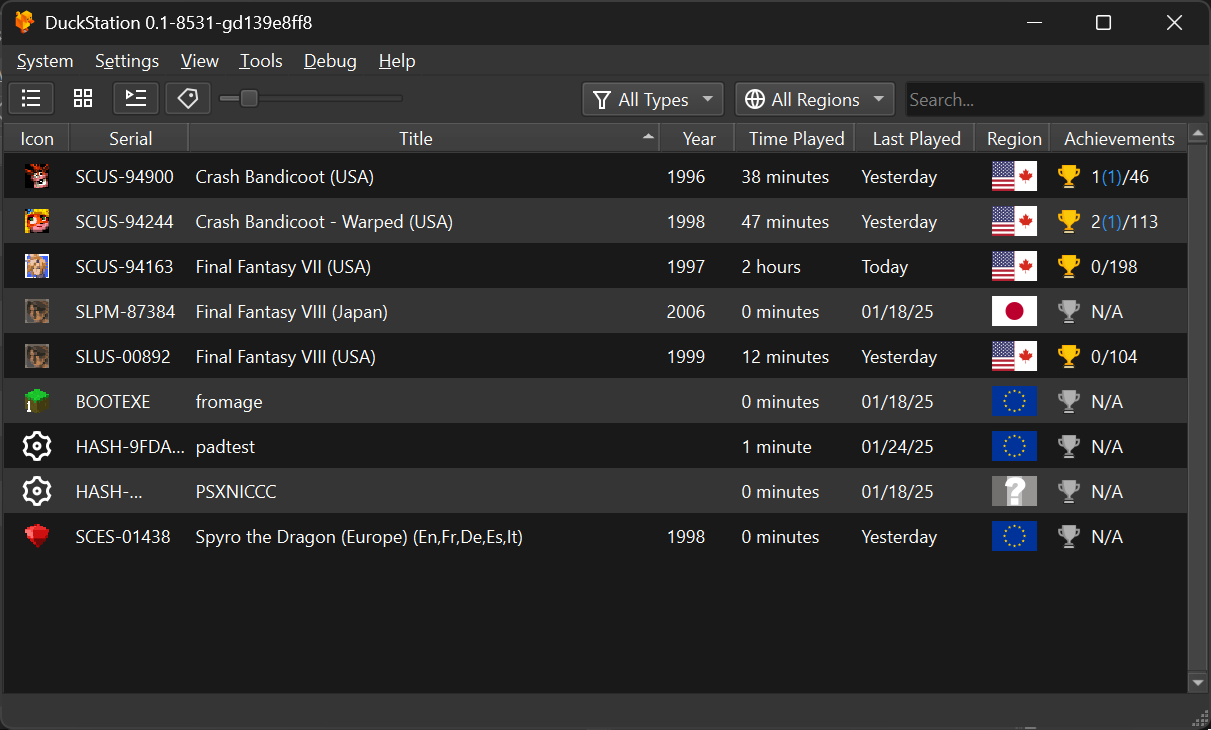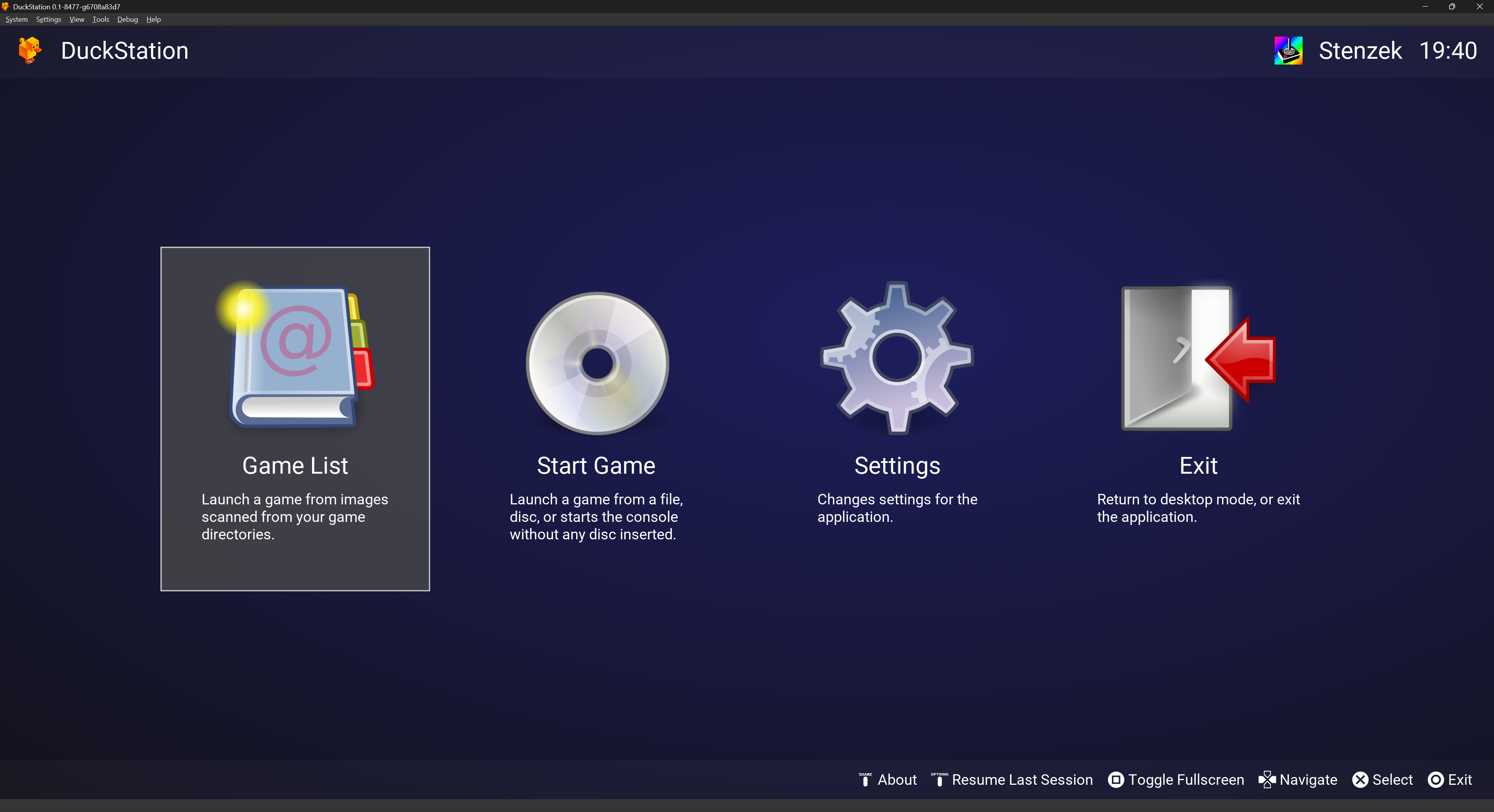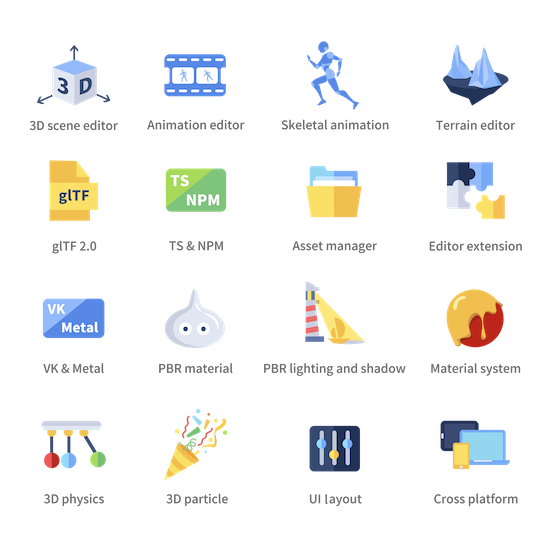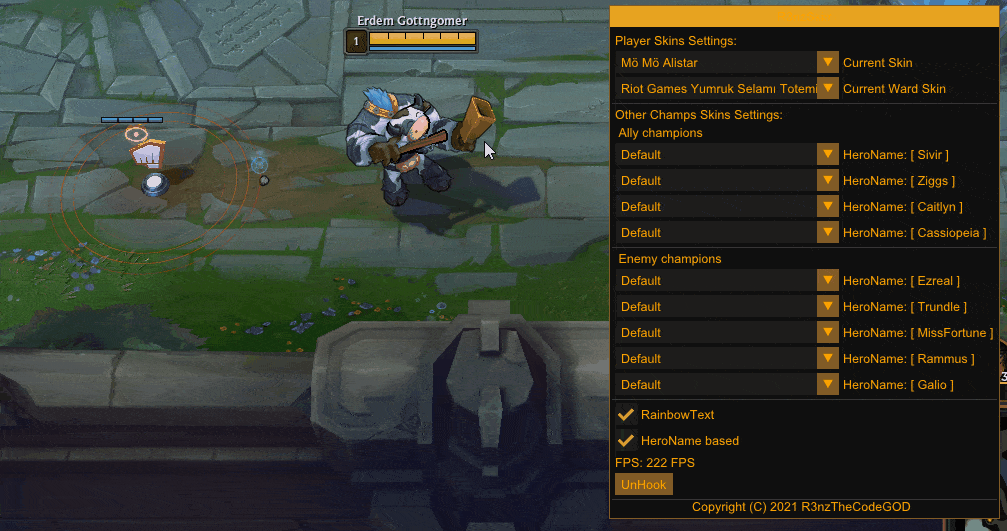Async Web Server for ESP8266 and ESP32
ESPAsyncWebServer



For help and support 
Async HTTP and WebSocket Server for ESP8266 Arduino
For ESP8266 it requires ESPAsyncTCP To use this library you might need to have the latest git versions of ESP8266 Arduino Core
For ESP32 it requires AsyncTCP to work To use this library you might need to have the latest git versions of ESP32 Arduino Core
Table of contents
Installation
Using PlatformIO
PlatformIO is an open source ecosystem for IoT development with cross platform build system, library manager and full support for Espressif ESP8266/ESP32 development. It works on the popular host OS: Mac OS X, Windows, Linux 32/64, Linux ARM (like Raspberry Pi, BeagleBone, CubieBoard).
- Install PlatformIO IDE
- Create new project using "PlatformIO Home > New Project"
- Update dev/platform to staging version:
- Add "ESP Async WebServer" to project using Project Configuration File
platformio.ini and lib_deps option:
[env:myboard]
platform = espressif...
board = ...
framework = arduino
# using the latest stable version
lib_deps = ESP Async WebServer
# or using GIT Url (the latest development version)
lib_deps = https://github.com/me-no-dev/ESPAsyncWebServer.git
- Happy coding with PlatformIO!
Why should you care
- Using asynchronous network means that you can handle more than one connection at the same time
- You are called once the request is ready and parsed
- When you send the response, you are immediately ready to handle other connections while the server is taking care of sending the response in the background
- Speed is OMG
- Easy to use API, HTTP Basic and Digest MD5 Authentication (default), ChunkedResponse
- Easily extendible to handle any type of content
- Supports Continue 100
- Async WebSocket plugin offering different locations without extra servers or ports
- Async EventSource (Server-Sent Events) plugin to send events to the browser
- URL Rewrite plugin for conditional and permanent url rewrites
- ServeStatic plugin that supports cache, Last-Modified, default index and more
- Simple template processing engine to handle templates
Important things to remember
- This is fully asynchronous server and as such does not run on the loop thread.
- You can not use yield or delay or any function that uses them inside the callbacks
- The server is smart enough to know when to close the connection and free resources
- You can not send more than one response to a single request
Principles of operation
The Async Web server
- Listens for connections
- Wraps the new clients into
Request
- Keeps track of clients and cleans memory
- Manages
Rewrites and apply them on the request url
- Manages
Handlers and attaches them to Requests
Request Life Cycle
- TCP connection is received by the server
- The connection is wrapped inside
Request object
- When the request head is received (type, url, get params, http version and host), the server goes through all
Rewrites (in the order they were added) to rewrite the url and inject query parameters, next, it goes through all attached Handlers(in the order they were added) trying to find one that canHandle the given request. If none are found, the default(catch-all) handler is attached.
- The rest of the request is received, calling the
handleUpload or handleBody methods of the Handler if they are needed (POST+File/Body)
- When the whole request is parsed, the result is given to the
handleRequest method of the Handler and is ready to be responded to
- In the
handleRequest method, to the Request is attached a Response object (see below) that will serve the response data back to the client
- When the
Response is sent, the client is closed and freed from the memory
Rewrites and how do they work
- The
Rewrites are used to rewrite the request url and/or inject get parameters for a specific request url path.
- All
Rewrites are evaluated on the request in the order they have been added to the server.
- The
Rewrite will change the request url only if the request url (excluding get parameters) is fully match the rewrite url, and when the optional Filter callback return true.
- Setting a
Filter to the Rewrite enables to control when to apply the rewrite, decision can be based on request url, http version, request host/port/target host, get parameters or the request client's localIP or remoteIP.
- Two filter callbacks are provided:
ON_AP_FILTER to execute the rewrite when request is made to the AP interface, ON_STA_FILTER to execute the rewrite when request is made to the STA interface.
- The
Rewrite can specify a target url with optional get parameters, e.g. /to-url?with=params
Handlers and how do they work
- The
Handlers are used for executing specific actions to particular requests
- One
Handler instance can be attached to any request and lives together with the server
- Setting a
Filter to the Handler enables to control when to apply the handler, decision can be based on request url, http version, request host/port/target host, get parameters or the request client's localIP or remoteIP.
- Two filter callbacks are provided:
ON_AP_FILTER to execute the rewrite when request is made to the AP interface, ON_STA_FILTER to execute the rewrite when request is made to the STA interface.
- The
canHandle method is used for handler specific control on whether the requests can be handled and for declaring any interesting headers that the Request should parse. Decision can be based on request method, request url, http version, request host/port/target host and get parameters
- Once a
Handler is attached to given Request (canHandle returned true) that Handler takes care to receive any file/data upload and attach a Response once the Request has been fully parsed
Handlers are evaluated in the order they are attached to the server. The canHandle is called only if the Filter that was set to the Handler return true.- The first
Handler that can handle the request is selected, not further Filter and canHandle are called.
Responses and how do they work
- The
Response objects are used to send the response data back to the client
- The
Response object lives with the Request and is freed on end or disconnect
- Different techniques are used depending on the response type to send the data in packets returning back almost immediately and sending the next packet when this one is received. Any time in between is spent to run the user loop and handle other network packets
- Responding asynchronously is probably the most difficult thing for most to understand
- Many different options exist for the user to make responding a background task
Template processing
- ESPAsyncWebserver contains simple template processing engine.
- Template processing can be added to most response types.
- Currently it supports only replacing template placeholders with actual values. No conditional processing, cycles, etc.
- Placeholders are delimited with
% symbols. Like this: %TEMPLATE_PLACEHOLDER%.
- It works by extracting placeholder name from response text and passing it to user provided function which should return actual value to be used instead of placeholder.
- Since it's user provided function, it is possible for library users to implement conditional processing and cycles themselves.
- Since it's impossible to know the actual response size after template processing step in advance (and, therefore, to include it in response headers), the response becomes chunked.
Libraries and projects that use AsyncWebServer
- WebSocketToSerial - Debug serial devices through the web browser
- Sattrack - Track the ISS with ESP8266
- ESP Radio - Icecast radio based on ESP8266 and VS1053
- VZero - the Wireless zero-config controller for volkszaehler.org
- ESPurna - ESPurna ("spark" in Catalan) is a custom C firmware for ESP8266 based smart switches. It was originally developed with the ITead Sonoff in mind.
- fauxmoESP - Belkin WeMo emulator library for ESP8266.
- ESP-RFID - MFRC522 RFID Access Control Management project for ESP8266.
Request Variables
Common Variables
request->version(); // uint8_t: 0 = HTTP/1.0, 1 = HTTP/1.1
request->method(); // enum: HTTP_GET, HTTP_POST, HTTP_DELETE, HTTP_PUT, HTTP_PATCH, HTTP_HEAD, HTTP_OPTIONS
request->url(); // String: URL of the request (not including host, port or GET parameters)
request->host(); // String: The requested host (can be used for virtual hosting)
request->contentType(); // String: ContentType of the request (not avaiable in Handler::canHandle)
request->contentLength(); // size_t: ContentLength of the request (not avaiable in Handler::canHandle)
request->multipart(); // bool: True if the request has content type "multipart"
Headers
//List all collected headers
int headers = request->headers();
int i;
for(i=0;i<headers;i++){
AsyncWebHeader* h = request->getHeader(i);
Serial.printf("HEADER[%s]: %s\n", h->name().c_str(), h->value().c_str());
}
//get specific header by name
if(request->hasHeader("MyHeader")){
AsyncWebHeader* h = request->getHeader("MyHeader");
Serial.printf("MyHeader: %s\n", h->value().c_str());
}
//List all collected headers (Compatibility)
int headers = request->headers();
int i;
for(i=0;i<headers;i++){
Serial.printf("HEADER[%s]: %s\n", request->headerName(i).c_str(), request->header(i).c_str());
}
//get specific header by name (Compatibility)
if(request->hasHeader("MyHeader")){
Serial.printf("MyHeader: %s\n", request->header("MyHeader").c_str());
}
GET, POST and FILE parameters
//List all parameters
int params = request->params();
for(int i=0;i<params;i++){
AsyncWebParameter* p = request->getParam(i);
if(p->isFile()){ //p->isPost() is also true
Serial.printf("FILE[%s]: %s, size: %u\n", p->name().c_str(), p->value().c_str(), p->size());
} else if(p->isPost()){
Serial.printf("POST[%s]: %s\n", p->name().c_str(), p->value().c_str());
} else {
Serial.printf("GET[%s]: %s\n", p->name().c_str(), p->value().c_str());
}
}
//Check if GET parameter exists
if(request->hasParam("download"))
AsyncWebParameter* p = request->getParam("download");
//Check if POST (but not File) parameter exists
if(request->hasParam("download", true))
AsyncWebParameter* p = request->getParam("download", true);
//Check if FILE was uploaded
if(request->hasParam("download", true, true))
AsyncWebParameter* p = request->getParam("download", true, true);
//List all parameters (Compatibility)
int args = request->args();
for(int i=0;i<args;i++){
Serial.printf("ARG[%s]: %s\n", request->argName(i).c_str(), request->arg(i).c_str());
}
//Check if parameter exists (Compatibility)
if(request->hasArg("download"))
String arg = request->arg("download");
FILE Upload handling
void handleUpload(AsyncWebServerRequest *request, String filename, size_t index, uint8_t *data, size_t len, bool final){
if(!index){
Serial.printf("UploadStart: %s\n", filename.c_str());
}
for(size_t i=0; i<len; i++){
Serial.write(data[i]);
}
if(final){
Serial.printf("UploadEnd: %s, %u B\n", filename.c_str(), index+len);
}
}
Body data handling
void handleBody(AsyncWebServerRequest *request, uint8_t *data, size_t len, size_t index, size_t total){
if(!index){
Serial.printf("BodyStart: %u B\n", total);
}
for(size_t i=0; i<len; i++){
Serial.write(data[i]);
}
if(index + len == total){
Serial.printf("BodyEnd: %u B\n", total);
}
}
If needed, the _tempObject field on the request can be used to store a pointer to temporary data (e.g. from the body) associated with the request. If assigned, the pointer will automatically be freed along with the request.
JSON body handling with ArduinoJson
Endpoints which consume JSON can use a special handler to get ready to use JSON data in the request callback:
#include "AsyncJson.h"
#include "ArduinoJson.h"
AsyncCallbackJsonWebHandler* handler = new AsyncCallbackJsonWebHandler("/rest/endpoint", [](AsyncWebServerRequest *request, JsonVariant &json) {
JsonObject& jsonObj = json.as<JsonObject>();
// ...
});
server.addHandler(handler);
Responses
Redirect to another URL
//to local url
request->redirect("/login");
//to external url
request->redirect("http://esp8266.com");
Basic response with HTTP Code
request->send(404); //Sends 404 File Not Found
Basic response with HTTP Code and extra headers
AsyncWebServerResponse *response = request->beginResponse(404); //Sends 404 File Not Found
response->addHeader("Server","ESP Async Web Server");
request->send(response);
Basic response with string content
request->send(200, "text/plain", "Hello World!");
Basic response with string content and extra headers
AsyncWebServerResponse *response = request->beginResponse(200, "text/plain", "Hello World!");
response->addHeader("Server","ESP Async Web Server");
request->send(response);
Send large webpage from PROGMEM
const char index_html[] PROGMEM = "..."; // large char array, tested with 14k
request->send_P(200, "text/html", index_html);
Send large webpage from PROGMEM and extra headers
const char index_html[] PROGMEM = "..."; // large char array, tested with 14k
AsyncWebServerResponse *response = request->beginResponse_P(200, "text/html", index_html);
response->addHeader("Server","ESP Async Web Server");
request->send(response);
Send large webpage from PROGMEM containing templates
String processor(const String& var)
{
if(var == "HELLO_FROM_TEMPLATE")
return F("Hello world!");
return String();
}
// ...
const char index_html[] PROGMEM = "..."; // large char array, tested with 14k
request->send_P(200, "text/html", index_html, processor);
Send large webpage from PROGMEM containing templates and extra headers
String processor(const String& var)
{
if(var == "HELLO_FROM_TEMPLATE")
return F("Hello world!");
return String();
}
// ...
const char index_html[] PROGMEM = "..."; // large char array, tested with 14k
AsyncWebServerResponse *response = request->beginResponse_P(200, "text/html", index_html, processor);
response->addHeader("Server","ESP Async Web Server");
request->send(response);
Send binary content from PROGMEM
//File: favicon.ico.gz, Size: 726
#define favicon_ico_gz_len 726
const uint8_t favicon_ico_gz[] PROGMEM = {
0x1F, 0x8B, 0x08, 0x08, 0x0B, 0x87, 0x90, 0x57, 0x00, 0x03, 0x66, 0x61, 0x76, 0x69, 0x63, 0x6F,
0x6E, 0x2E, 0x69, 0x63, 0x6F, 0x00, 0xCD, 0x53, 0x5F, 0x48, 0x9A, 0x51, 0x14, 0xBF, 0x62, 0x6D,
0x86, 0x96, 0xA9, 0x64, 0xD3, 0xFE, 0xA8, 0x99, 0x65, 0x1A, 0xB4, 0x8A, 0xA8, 0x51, 0x54, 0x23,
0xA8, 0x11, 0x49, 0x51, 0x8A, 0x34, 0x62, 0x93, 0x85, 0x31, 0x58, 0x44, 0x12, 0x45, 0x2D, 0x58,
0xF5, 0x52, 0x41, 0x10, 0x23, 0x82, 0xA0, 0x20, 0x98, 0x2F, 0xC1, 0x26, 0xED, 0xA1, 0x20, 0x89,
0x04, 0xD7, 0x83, 0x58, 0x20, 0x28, 0x04, 0xAB, 0xD1, 0x9B, 0x8C, 0xE5, 0xC3, 0x60, 0x32, 0x64,
0x0E, 0x56, 0xBF, 0x9D, 0xEF, 0xF6, 0x30, 0x82, 0xED, 0xAD, 0x87, 0xDD, 0x8F, 0xF3, 0xDD, 0x8F,
0x73, 0xCF, 0xEF, 0x9C, 0xDF, 0x39, 0xBF, 0xFB, 0x31, 0x26, 0xA2, 0x27, 0x37, 0x97, 0xD1, 0x5B,
0xCF, 0x9E, 0x67, 0x30, 0xA6, 0x66, 0x8C, 0x99, 0xC9, 0xC8, 0x45, 0x9E, 0x6B, 0x3F, 0x5F, 0x74,
0xA6, 0x94, 0x5E, 0xDB, 0xFF, 0xB2, 0xE6, 0xE7, 0xE7, 0xF9, 0xDE, 0xD6, 0xD6, 0x96, 0xDB, 0xD8,
0xD8, 0x78, 0xBF, 0xA1, 0xA1, 0xC1, 0xDA, 0xDC, 0xDC, 0x2C, 0xEB, 0xED, 0xED, 0x15, 0x9B, 0xCD,
0xE6, 0x4A, 0x83, 0xC1, 0xE0, 0x2E, 0x29, 0x29, 0x99, 0xD6, 0x6A, 0xB5, 0x4F, 0x75, 0x3A, 0x9D,
0x61, 0x75, 0x75, 0x95, 0xB5, 0xB7, 0xB7, 0xDF, 0xC8, 0xD1, 0xD4, 0xD4, 0xF4, 0xB0, 0xBA, 0xBA,
0xFA, 0x83, 0xD5, 0x6A, 0xFD, 0x5A, 0x5E, 0x5E, 0x9E, 0x28, 0x2D, 0x2D, 0x0D, 0x10, 0xC6, 0x4B,
0x98, 0x78, 0x5E, 0x5E, 0xDE, 0x95, 0x42, 0xA1, 0x40, 0x4E, 0x4E, 0xCE, 0x65, 0x76, 0x76, 0xF6,
0x47, 0xB5, 0x5A, 0x6D, 0x4F, 0x26, 0x93, 0xA2, 0xD6, 0xD6, 0x56, 0x8E, 0x6D, 0x69, 0x69, 0xD1,
0x11, 0x36, 0x62, 0xB1, 0x58, 0x60, 0x32, 0x99, 0xA0, 0xD7, 0xEB, 0x51, 0x58, 0x58, 0x88, 0xFC,
0xFC, 0x7C, 0x10, 0x16, 0x02, 0x56, 0x2E, 0x97, 0x43, 0x2A, 0x95, 0x42, 0x2C, 0x16, 0x23, 0x33,
0x33, 0x33, 0xAE, 0x52, 0xA9, 0x1E, 0x64, 0x65, 0x65, 0x71, 0x7C, 0x7D, 0x7D, 0xBD, 0x93, 0xEA,
0xFE, 0x30, 0x1A, 0x8D, 0xE8, 0xEC, 0xEC, 0xC4, 0xE2, 0xE2, 0x22, 0x6A, 0x6A, 0x6A, 0x40, 0x39,
0x41, 0xB5, 0x38, 0x4E, 0xC8, 0x33, 0x3C, 0x3C, 0x0C, 0x87, 0xC3, 0xC1, 0x6B, 0x54, 0x54, 0x54,
0xBC, 0xE9, 0xEB, 0xEB, 0x93, 0x5F, 0x5C, 0x5C, 0x30, 0x8A, 0x9D, 0x2E, 0x2B, 0x2B, 0xBB, 0xA2,
0x3E, 0x41, 0xBD, 0x21, 0x1E, 0x8F, 0x63, 0x6A, 0x6A, 0x0A, 0x81, 0x40, 0x00, 0x94, 0x1B, 0x3D,
0x3D, 0x3D, 0x42, 0x3C, 0x96, 0x96, 0x96, 0x70, 0x7E, 0x7E, 0x8E, 0xE3, 0xE3, 0x63, 0xF8, 0xFD,
0xFE, 0xB4, 0xD7, 0xEB, 0xF5, 0x8F, 0x8F, 0x8F, 0x5B, 0x68, 0x5E, 0x6F, 0x05, 0xCE, 0xB4, 0xE3,
0xE8, 0xE8, 0x08, 0x27, 0x27, 0x27, 0xD8, 0xDF, 0xDF, 0xC7, 0xD9, 0xD9, 0x19, 0x6C, 0x36, 0x1B,
0x36, 0x36, 0x36, 0x38, 0x9F, 0x85, 0x85, 0x05, 0xAC, 0xAF, 0xAF, 0x23, 0x1A, 0x8D, 0x22, 0x91,
0x48, 0x20, 0x16, 0x8B, 0xFD, 0xDA, 0xDA, 0xDA, 0x7A, 0x41, 0x33, 0x7E, 0x57, 0x50, 0x50, 0x80,
0x89, 0x89, 0x09, 0x84, 0xC3, 0x61, 0x6C, 0x6F, 0x6F, 0x23, 0x12, 0x89, 0xE0, 0xE0, 0xE0, 0x00,
0x43, 0x43, 0x43, 0x58, 0x5E, 0x5E, 0xE6, 0x9C, 0x7D, 0x3E, 0x1F, 0x46, 0x47, 0x47, 0x79, 0xBE,
0xBD, 0xBD, 0x3D, 0xE1, 0x3C, 0x1D, 0x0C, 0x06, 0x9F, 0x10, 0xB7, 0xC7, 0x84, 0x4F, 0xF6, 0xF7,
0xF7, 0x63, 0x60, 0x60, 0x00, 0x83, 0x83, 0x83, 0x18, 0x19, 0x19, 0xC1, 0xDC, 0xDC, 0x1C, 0x8F,
0x17, 0x7C, 0xA4, 0x27, 0xE7, 0x34, 0x39, 0x39, 0x89, 0x9D, 0x9D, 0x1D, 0x6E, 0x54, 0xE3, 0x13,
0xE5, 0x34, 0x11, 0x37, 0x49, 0x51, 0x51, 0xD1, 0x4B, 0xA5, 0x52, 0xF9, 0x45, 0x26, 0x93, 0x5D,
0x0A, 0xF3, 0x92, 0x48, 0x24, 0xA0, 0x6F, 0x14, 0x17, 0x17, 0xA3, 0xB6, 0xB6, 0x16, 0x5D, 0x5D,
0x5D, 0x7C, 0x1E, 0xBB, 0xBB, 0xBB, 0x9C, 0xD7, 0xE1, 0xE1, 0x21, 0x42, 0xA1, 0xD0, 0x6B, 0xD2,
0x45, 0x4C, 0x33, 0x12, 0x34, 0xCC, 0xA0, 0x19, 0x54, 0x92, 0x56, 0x0E, 0xD2, 0xD9, 0x43, 0xF8,
0xCF, 0x82, 0x56, 0xC2, 0xDC, 0xEB, 0xEA, 0xEA, 0x38, 0x7E, 0x6C, 0x6C, 0x4C, 0xE0, 0xFE, 0x9D,
0xB8, 0xBF, 0xA7, 0xFA, 0xAF, 0x56, 0x56, 0x56, 0xEE, 0x6D, 0x6E, 0x6E, 0xDE, 0xB8, 0x47, 0x55,
0x55, 0x55, 0x6C, 0x66, 0x66, 0x46, 0x44, 0xDA, 0x3B, 0x34, 0x1A, 0x4D, 0x94, 0xB0, 0x3F, 0x09,
0x7B, 0x45, 0xBD, 0xA5, 0x5D, 0x2E, 0x57, 0x8C, 0x7A, 0x73, 0xD9, 0xED, 0xF6, 0x3B, 0x84, 0xFF,
0xE7, 0x7D, 0xA6, 0x3A, 0x2C, 0x95, 0x4A, 0xB1, 0x8E, 0x8E, 0x0E, 0x6D, 0x77, 0x77, 0xB7, 0xCD,
0xE9, 0x74, 0x3E, 0x73, 0xBB, 0xDD, 0x8F, 0x3C, 0x1E, 0x8F, 0xE6, 0xF4, 0xF4, 0x94, 0xAD, 0xAD,
0xAD, 0xDD, 0xDE, 0xCF, 0x73, 0x0B, 0x0B, 0xB8, 0xB6, 0xE0, 0x5D, 0xC6, 0x66, 0xC5, 0xE4, 0x10,
0x4C, 0xF4, 0xF7, 0xD8, 0x59, 0xF2, 0x7F, 0xA3, 0xB8, 0xB4, 0xFC, 0x0F, 0xEE, 0x37, 0x70, 0xEC,
0x16, 0x4A, 0x7E, 0x04, 0x00, 0x00
};
AsyncWebServerResponse *response = request->beginResponse_P(200, "image/x-icon", favicon_ico_gz, favicon_ico_gz_len);
response->addHeader("Content-Encoding", "gzip");
request->send(response);
Respond with content coming from a Stream
//read 12 bytes from Serial and send them as Content Type text/plain
request->send(Serial, "text/plain", 12);
Respond with content coming from a Stream and extra headers
//read 12 bytes from Serial and send them as Content Type text/plain
AsyncWebServerResponse *response = request->beginResponse(Serial, "text/plain", 12);
response->addHeader("Server","ESP Async Web Server");
request->send(response);
Respond with content coming from a Stream containing templates
String processor(const String& var)
{
if(var == "HELLO_FROM_TEMPLATE")
return F("Hello world!");
return String();
}
// ...
//read 12 bytes from Serial and send them as Content Type text/plain
request->send(Serial, "text/plain", 12, processor);
Respond with content coming from a Stream containing templates and extra headers
String processor(const String& var)
{
if(var == "HELLO_FROM_TEMPLATE")
return F("Hello world!");
return String();
}
// ...
//read 12 bytes from Serial and send them as Content Type text/plain
AsyncWebServerResponse *response = request->beginResponse(Serial, "text/plain", 12, processor);
response->addHeader("Server","ESP Async Web Server");
request->send(response);
Respond with content coming from a File
//Send index.htm with default content type
request->send(SPIFFS, "/index.htm");
//Send index.htm as text
request->send(SPIFFS, "/index.htm", "text/plain");
//Download index.htm
request->send(SPIFFS, "/index.htm", String(), true);
Respond with content coming from a File and extra headers
//Send index.htm with default content type
AsyncWebServerResponse *response = request->beginResponse(SPIFFS, "/index.htm");
//Send index.htm as text
AsyncWebServerResponse *response = request->beginResponse(SPIFFS, "/index.htm", "text/plain");
//Download index.htm
AsyncWebServerResponse *response = request->beginResponse(SPIFFS, "/index.htm", String(), true);
response->addHeader("Server","ESP Async Web Server");
request->send(response);
Respond with content coming from a File containing templates
Internally uses Chunked Response.
Index.htm contents:
%HELLO_FROM_TEMPLATE%
Somewhere in source files:
String processor(const String& var)
{
if(var == "HELLO_FROM_TEMPLATE")
return F("Hello world!");
return String();
}
// ...
//Send index.htm with template processor function
request->send(SPIFFS, "/index.htm", String(), false, processor);
Respond with content using a callback
//send 128 bytes as plain text
request->send("text/plain", 128, [](uint8_t *buffer, size_t maxLen, size_t index) -> size_t {
//Write up to "maxLen" bytes into "buffer" and return the amount written.
//index equals the amount of bytes that have been already sent
//You will not be asked for more bytes once the content length has been reached.
//Keep in mind that you can not delay or yield waiting for more data!
//Send what you currently have and you will be asked for more again
return mySource.read(buffer, maxLen);
});
Respond with content using a callback and extra headers
//send 128 bytes as plain text
AsyncWebServerResponse *response = request->beginResponse("text/plain", 128, [](uint8_t *buffer, size_t maxLen, size_t index) -> size_t {
//Write up to "maxLen" bytes into "buffer" and return the amount written.
//index equals the amount of bytes that have been already sent
//You will not be asked for more bytes once the content length has been reached.
//Keep in mind that you can not delay or yield waiting for more data!
//Send what you currently have and you will be asked for more again
return mySource.read(buffer, maxLen);
});
response->addHeader("Server","ESP Async Web Server");
request->send(response);
Respond with content using a callback containing templates
String processor(const String& var)
{
if(var == "HELLO_FROM_TEMPLATE")
return F("Hello world!");
return String();
}
// ...
//send 128 bytes as plain text
request->send("text/plain", 128, [](uint8_t *buffer, size_t maxLen, size_t index) -> size_t {
//Write up to "maxLen" bytes into "buffer" and return the amount written.
//index equals the amount of bytes that have been already sent
//You will not be asked for more bytes once the content length has been reached.
//Keep in mind that you can not delay or yield waiting for more data!
//Send what you currently have and you will be asked for more again
return mySource.read(buffer, maxLen);
}, processor);
Respond with content using a callback containing templates and extra headers
String processor(const String& var)
{
if(var == "HELLO_FROM_TEMPLATE")
return F("Hello world!");
return String();
}
// ...
//send 128 bytes as plain text
AsyncWebServerResponse *response = request->beginResponse("text/plain", 128, [](uint8_t *buffer, size_t maxLen, size_t index) -> size_t {
//Write up to "maxLen" bytes into "buffer" and return the amount written.
//index equals the amount of bytes that have been already sent
//You will not be asked for more bytes once the content length has been reached.
//Keep in mind that you can not delay or yield waiting for more data!
//Send what you currently have and you will be asked for more again
return mySource.read(buffer, maxLen);
}, processor);
response->addHeader("Server","ESP Async Web Server");
request->send(response);
Chunked Response
Used when content length is unknown. Works best if the client supports HTTP/1.1
AsyncWebServerResponse *response = request->beginChunkedResponse("text/plain", [](uint8_t *buffer, size_t maxLen, size_t index) -> size_t {
//Write up to "maxLen" bytes into "buffer" and return the amount written.
//index equals the amount of bytes that have been already sent
//You will be asked for more data until 0 is returned
//Keep in mind that you can not delay or yield waiting for more data!
return mySource.read(buffer, maxLen);
});
response->addHeader("Server","ESP Async Web Server");
request->send(response);
Chunked Response containing templates
Used when content length is unknown. Works best if the client supports HTTP/1.1
String processor(const String& var)
{
if(var == "HELLO_FROM_TEMPLATE")
return F("Hello world!");
return String();
}
// ...
AsyncWebServerResponse *response = request->beginChunkedResponse("text/plain", [](uint8_t *buffer, size_t maxLen, size_t index) -> size_t {
//Write up to "maxLen" bytes into "buffer" and return the amount written.
//index equals the amount of bytes that have been already sent
//You will be asked for more data until 0 is returned
//Keep in mind that you can not delay or yield waiting for more data!
return mySource.read(buffer, maxLen);
}, processor);
response->addHeader("Server","ESP Async Web Server");
request->send(response);
Print to response
AsyncResponseStream *response = request->beginResponseStream("text/html");
response->addHeader("Server","ESP Async Web Server");
response->printf("<!DOCTYPE html><html><head><title>Webpage at %s</title></head><body>", request->url().c_str());
response->print("<h2>Hello ");
response->print(request->client()->remoteIP());
response->print("</h2>");
response->print("<h3>General</h3>");
response->print("<ul>");
response->printf("<li>Version: HTTP/1.%u</li>", request->version());
response->printf("<li>Method: %s</li>", request->methodToString());
response->printf("<li>URL: %s</li>", request->url().c_str());
response->printf("<li>Host: %s</li>", request->host().c_str());
response->printf("<li>ContentType: %s</li>", request->contentType().c_str());
response->printf("<li>ContentLength: %u</li>", request->contentLength());
response->printf("<li>Multipart: %s</li>", request->multipart()?"true":"false");
response->print("</ul>");
response->print("<h3>Headers</h3>");
response->print("<ul>");
int headers = request->headers();
for(int i=0;i<headers;i++){
AsyncWebHeader* h = request->getHeader(i);
response->printf("<li>%s: %s</li>", h->name().c_str(), h->value().c_str());
}
response->print("</ul>");
response->print("<h3>Parameters</h3>");
response->print("<ul>");
int params = request->params();
for(int i=0;i<params;i++){
AsyncWebParameter* p = request->getParam(i);
if(p->isFile()){
response->printf("<li>FILE[%s]: %s, size: %u</li>", p->name().c_str(), p->value().c_str(), p->size());
} else if(p->isPost()){
response->printf("<li>POST[%s]: %s</li>", p->name().c_str(), p->value().c_str());
} else {
response->printf("<li>GET[%s]: %s</li>", p->name().c_str(), p->value().c_str());
}
}
response->print("</ul>");
response->print("</body></html>");
//send the response last
request->send(response);
ArduinoJson Basic Response
This way of sending Json is great for when the result is below 4KB
#include "AsyncJson.h"
#include "ArduinoJson.h"
AsyncResponseStream *response = request->beginResponseStream("application/json");
DynamicJsonBuffer jsonBuffer;
JsonObject &root = jsonBuffer.createObject();
root["heap"] = ESP.getFreeHeap();
root["ssid"] = WiFi.SSID();
root.printTo(*response);
request->send(response);
ArduinoJson Advanced Response
This response can handle really large Json objects (tested to 40KB) There isn't any noticeable speed decrease for small results with the method above Since ArduinoJson does not allow reading parts of the string, the whole Json has to be passed every time a chunks needs to be sent, which shows speed decrease proportional to the resulting json packets
#include "AsyncJson.h"
#include "ArduinoJson.h"
AsyncJsonResponse * response = new AsyncJsonResponse();
response->addHeader("Server","ESP Async Web Server");
JsonObject& root = response->getRoot();
root["heap"] = ESP.getFreeHeap();
root["ssid"] = WiFi.SSID();
response->setLength();
request->send(response);
Serving static files
In addition to serving files from SPIFFS as described above, the server provide a dedicated handler that optimize the performance of serving files from SPIFFS - AsyncStaticWebHandler. Use server.serveStatic() function to initialize and add a new instance of AsyncStaticWebHandler to the server. The Handler will not handle the request if the file does not exists, e.g. the server will continue to look for another handler that can handle the request. Notice that you can chain setter functions to setup the handler, or keep a pointer to change it at a later time.
Serving specific file by name
// Serve the file "/www/page.htm" when request url is "/page.htm"
server.serveStatic("/page.htm", SPIFFS, "/www/page.htm");
Serving files in directory
To serve files in a directory, the path to the files should specify a directory in SPIFFS and ends with "/".
// Serve files in directory "/www/" when request url starts with "/"
// Request to the root or none existing files will try to server the defualt
// file name "index.htm" if exists
server.serveStatic("/", SPIFFS, "/www/");
// Server with different default file
server.serveStatic("/", SPIFFS, "/www/").setDefaultFile("default.html");
Serving static files with authentication
server
.serveStatic("/", SPIFFS, "/www/")
.setDefaultFile("default.html")
.setAuthentication("user", "pass");
Specifying Cache-Control header
It is possible to specify Cache-Control header value to reduce the number of calls to the server once the client loaded the files. For more information on Cache-Control values see Cache-Control
// Cache responses for 10 minutes (600 seconds)
server.serveStatic("/", SPIFFS, "/www/").setCacheControl("max-age=600");
//*** Change Cache-Control after server setup ***
// During setup - keep a pointer to the handler
AsyncStaticWebHandler* handler = &server.serveStatic("/", SPIFFS, "/www/").setCacheControl("max-age=600");
// At a later event - change Cache-Control
handler->setCacheControl("max-age=30");
Specifying Date-Modified header
It is possible to specify Date-Modified header to enable the server to return Not-Modified (304) response for requests with "If-Modified-Since" header with the same value, instead of responding with the actual file content.
// Update the date modified string every time files are updated
server.serveStatic("/", SPIFFS, "/www/").setLastModified("Mon, 20 Jun 2016 14:00:00 GMT");
//*** Chage last modified value at a later stage ***
// During setup - read last modified value from config or EEPROM
String date_modified = loadDateModified();
AsyncStaticWebHandler* handler = &server.serveStatic("/", SPIFFS, "/www/");
handler->setLastModified(date_modified);
// At a later event when files are updated
String date_modified = getNewDateModfied();
saveDateModified(date_modified); // Save for next reset
handler->setLastModified(date_modified);
Specifying Template Processor callback
It is possible to specify template processor for static files. For information on template processor see Respond with content coming from a File containing templates.
String processor(const String& var)
{
if(var == "HELLO_FROM_TEMPLATE")
return F("Hello world!");
return String();
}
// ...
server.serveStatic("/", SPIFFS, "/www/").setTemplateProcessor(processor);
Param Rewrite With Matching
It is possible to rewrite the request url with parameter matchg. Here is an example with one parameter: Rewrite for example "/radio/{frequence}" -> "/radio?f={frequence}"
class OneParamRewrite : public AsyncWebRewrite
{
protected:
String _urlPrefix;
int _paramIndex;
String _paramsBackup;
public:
OneParamRewrite(const char* from, const char* to)
: AsyncWebRewrite(from, to) {
_paramIndex = _from.indexOf('{');
if( _paramIndex >=0 && _from.endsWith("}")) {
_urlPrefix = _from.substring(0, _paramIndex);
int index = _params.indexOf('{');
if(index >= 0) {
_params = _params.substring(0, index);
}
} else {
_urlPrefix = _from;
}
_paramsBackup = _params;
}
bool match(AsyncWebServerRequest *request) override {
if(request->url().startsWith(_urlPrefix)) {
if(_paramIndex >= 0) {
_params = _paramsBackup + request->url().substring(_paramIndex);
} else {
_params = _paramsBackup;
}
return true;
} else {
return false;
}
}
};
Usage:
server.addRewrite( new OneParamRewrite("/radio/{frequence}", "/radio?f={frequence}") );
Using filters
Filters can be set to Rewrite or Handler in order to control when to apply the rewrite and consider the handler. A filter is a callback function that evaluates the request and return a boolean true to include the item or false to exclude it. Two filter callback are provided for convince:
ON_STA_FILTER - return true when requests are made to the STA (station mode) interface.ON_AP_FILTER - return true when requests are made to the AP (access point) interface.
Serve different site files in AP mode
server.serveStatic("/", SPIFFS, "/www/").setFilter(ON_STA_FILTER);
server.serveStatic("/", SPIFFS, "/ap/").setFilter(ON_AP_FILTER);
Rewrite to different index on AP
// Serve the file "/www/index-ap.htm" in AP, and the file "/www/index.htm" on STA
server.rewrite("/", "index.htm");
server.rewrite("/index.htm", "index-ap.htm").setFilter(ON_AP_FILTER);
server.serveStatic("/", SPIFFS, "/www/");
Serving different hosts
// Filter callback using request host
bool filterOnHost1(AsyncWebServerRequest *request) { return request->host() == "host1"; }
// Server setup: server files in "/host1/" to requests for "host1", and files in "/www/" otherwise.
server.serveStatic("/", SPIFFS, "/host1/").setFilter(filterOnHost1);
server.serveStatic("/", SPIFFS, "/www/");
Determine interface inside callbacks
String RedirectUrl = "http://";
if (ON_STA_FILTER(request)) {
RedirectUrl += WiFi.localIP().toString();
} else {
RedirectUrl += WiFi.softAPIP().toString();
}
RedirectUrl += "/index.htm";
request->redirect(RedirectUrl);
Bad Responses
Some responses are implemented, but you should not use them, because they do not conform to HTTP. The following example will lead to unclean close of the connection and more time wasted than providing the length of the content
Respond with content using a callback without content length to HTTP/1.0 clients
//This is used as fallback for chunked responses to HTTP/1.0 Clients
request->send("text/plain", 0, [](uint8_t *buffer, size_t maxLen, size_t index) -> size_t {
//Write up to "maxLen" bytes into "buffer" and return the amount written.
//You will be asked for more data until 0 is returned
//Keep in mind that you can not delay or yield waiting for more data!
return mySource.read(buffer, maxLen);
});
Async WebSocket Plugin
The server includes a web socket plugin which lets you define different WebSocket locations to connect to without starting another listening service or using different port
Async WebSocket Event
void onEvent(AsyncWebSocket * server, AsyncWebSocketClient * client, AwsEventType type, void * arg, uint8_t *data, size_t len){
if(type == WS_EVT_CONNECT){
//client connected
os_printf("ws[%s][%u] connect\n", server->url(), client->id());
client->printf("Hello Client %u :)", client->id());
client->ping();
} else if(type == WS_EVT_DISCONNECT){
//client disconnected
os_printf("ws[%s][%u] disconnect: %u\n", server->url(), client->id());
} else if(type == WS_EVT_ERROR){
//error was received from the other end
os_printf("ws[%s][%u] error(%u): %s\n", server->url(), client->id(), *((uint16_t*)arg), (char*)data);
} else if(type == WS_EVT_PONG){
//pong message was received (in response to a ping request maybe)
os_printf("ws[%s][%u] pong[%u]: %s\n", server->url(), client->id(), len, (len)?(char*)data:"");
} else if(type == WS_EVT_DATA){
//data packet
AwsFrameInfo * info = (AwsFrameInfo*)arg;
if(info->final && info->index == 0 && info->len == len){
//the whole message is in a single frame and we got all of it's data
os_printf("ws[%s][%u] %s-message[%llu]: ", server->url(), client->id(), (info->opcode == WS_TEXT)?"text":"binary", info->len);
if(info->opcode == WS_TEXT){
data[len] = 0;
os_printf("%s\n", (char*)data);
} else {
for(size_t i=0; i < info->len; i++){
os_printf("%02x ", data[i]);
}
os_printf("\n");
}
if(info->opcode == WS_TEXT)
client->text("I got your text message");
else
client->binary("I got your binary message");
} else {
//message is comprised of multiple frames or the frame is split into multiple packets
if(info->index == 0){
if(info->num == 0)
os_printf("ws[%s][%u] %s-message start\n", server->url(), client->id(), (info->message_opcode == WS_TEXT)?"text":"binary");
os_printf("ws[%s][%u] frame[%u] start[%llu]\n", server->url(), client->id(), info->num, info->len);
}
os_printf("ws[%s][%u] frame[%u] %s[%llu - %llu]: ", server->url(), client->id(), info->num, (info->message_opcode == WS_TEXT)?"text":"binary", info->index, info->index + len);
if(info->message_opcode == WS_TEXT){
data[len] = 0;
os_printf("%s\n", (char*)data);
} else {
for(size_t i=0; i < len; i++){
os_printf("%02x ", data[i]);
}
os_printf("\n");
}
if((info->index + len) == info->len){
os_printf("ws[%s][%u] frame[%u] end[%llu]\n", server->url(), client->id(), info->num, info->len);
if(info->final){
os_printf("ws[%s][%u] %s-message end\n", server->url(), client->id(), (info->message_opcode == WS_TEXT)?"text":"binary");
if(info->message_opcode == WS_TEXT)
client->text("I got your text message");
else
client->binary("I got your binary message");
}
}
}
}
}
Methods for sending data to a socket client
//Server methods
AsyncWebSocket ws("/ws");
//printf to a client
ws.printf((uint32_t)client_id, arguments...);
//printf to all clients
ws.printfAll(arguments...);
//printf_P to a client
ws.printf_P((uint32_t)client_id, PSTR(format), arguments...);
//printfAll_P to all clients
ws.printfAll_P(PSTR(format), arguments...);
//send text to a client
ws.text((uint32_t)client_id, (char*)text);
ws.text((uint32_t)client_id, (uint8_t*)text, (size_t)len);
//send text from PROGMEM to a client
ws.text((uint32_t)client_id, PSTR("text"));
const char flash_text[] PROGMEM = "Text to send"
ws.text((uint32_t)client_id, FPSTR(flash_text));
//send text to all clients
ws.textAll((char*)text);
ws.textAll((uint8_t*)text, (size_t)len);
//send binary to a client
ws.binary((uint32_t)client_id, (char*)binary);
ws.binary((uint32_t)client_id, (uint8_t*)binary, (size_t)len);
//send binary from PROGMEM to a client
const uint8_t flash_binary[] PROGMEM = { 0x01, 0x02, 0x03, 0x04 };
ws.binary((uint32_t)client_id, flash_binary, 4);
//send binary to all clients
ws.binaryAll((char*)binary);
ws.binaryAll((uint8_t*)binary, (size_t)len);
//HTTP Authenticate before switch to Websocket protocol
ws.setAuthentication("user", "pass");
//client methods
AsyncWebSocketClient * client;
//printf
client->printf(arguments...);
//printf_P
client->printf_P(PSTR(format), arguments...);
//send text
client->text((char*)text);
client->text((uint8_t*)text, (size_t)len);
//send text from PROGMEM
client->text(PSTR("text"));
const char flash_text[] PROGMEM = "Text to send";
client->text(FPSTR(flash_text));
//send binary
client->binary((char*)binary);
client->binary((uint8_t*)binary, (size_t)len);
//send binary from PROGMEM
const uint8_t flash_binary[] PROGMEM = { 0x01, 0x02, 0x03, 0x04 };
client->binary(flash_binary, 4);
Direct access to web socket message buffer
When sending a web socket message using the above methods a buffer is created. Under certain circumstances you might want to manipulate or populate this buffer directly from your application, for example to prevent unnecessary duplications of the data. This example below shows how to create a buffer and print data to it from an ArduinoJson object then send it.
void sendDataWs(AsyncWebSocketClient * client)
{
DynamicJsonBuffer jsonBuffer;
JsonObject& root = jsonBuffer.createObject();
root["a"] = "abc";
root["b"] = "abcd";
root["c"] = "abcde";
root["d"] = "abcdef";
root["e"] = "abcdefg";
size_t len = root.measureLength();
AsyncWebSocketMessageBuffer * buffer = ws.makeBuffer(len); // creates a buffer (len + 1) for you.
if (buffer) {
root.printTo((char *)buffer->get(), len + 1);
if (client) {
client->text(buffer);
} else {
ws.textAll(buffer);
}
}
}
Limiting the number of web socket clients
Browsers sometimes do not correctly close the websocket connection, even when the close() function is called in javascript. This will eventually exhaust the web server's resources and will cause the server to crash. Periodically calling the cleanClients() function from the main loop() function limits the number of clients by closing the oldest client when the maximum number of clients has been exceeded. This can called be every cycle, however, if you wish to use less power, then calling as infrequently as once per second is sufficient.
void loop(){
ws.cleanupClients();
}
Async Event Source Plugin
The server includes EventSource (Server-Sent Events) plugin which can be used to send short text events to the browser. Difference between EventSource and WebSockets is that EventSource is single direction, text-only protocol.
Setup Event Source on the server
AsyncWebServer server(80);
AsyncEventSource events("/events");
void setup(){
// setup ......
events.onConnect([](AsyncEventSourceClient *client){
if(client->lastId()){
Serial.printf("Client reconnected! Last message ID that it gat is: %u\n", client->lastId());
}
//send event with message "hello!", id current millis
// and set reconnect delay to 1 second
client->send("hello!",NULL,millis(),1000);
});
//HTTP Basic authentication
events.setAuthentication("user", "pass");
server.addHandler(&events);
// setup ......
}
void loop(){
if(eventTriggered){ // your logic here
//send event "myevent"
events.send("my event content","myevent",millis());
}
}
Setup Event Source in the browser
if (!!window.EventSource) {
var source = new EventSource('/events');
source.addEventListener('open', function(e) {
console.log("Events Connected");
}, false);
source.addEventListener('error', function(e) {
if (e.target.readyState != EventSource.OPEN) {
console.log("Events Disconnected");
}
}, false);
source.addEventListener('message', function(e) {
console.log("message", e.data);
}, false);
source.addEventListener('myevent', function(e) {
console.log("myevent", e.data);
}, false);
}
Scanning for available WiFi Networks
//First request will return 0 results unless you start scan from somewhere else (loop/setup)
//Do not request more often than 3-5 seconds
server.on("/scan", HTTP_GET, [](AsyncWebServerRequest *request){
String json = "[";
int n = WiFi.scanComplete();
if(n == -2){
WiFi.scanNetworks(true);
} else if(n){
for (int i = 0; i < n; ++i){
if(i) json += ",";
json += "{";
json += "\"rssi\":"+String(WiFi.RSSI(i));
json += ",\"ssid\":\""+WiFi.SSID(i)+"\"";
json += ",\"bssid\":\""+WiFi.BSSIDstr(i)+"\"";
json += ",\"channel\":"+String(WiFi.channel(i));
json += ",\"secure\":"+String(WiFi.encryptionType(i));
json += ",\"hidden\":"+String(WiFi.isHidden(i)?"true":"false");
json += "}";
}
WiFi.scanDelete();
if(WiFi.scanComplete() == -2){
WiFi.scanNetworks(true);
}
}
json += "]";
request->send(200, "application/json", json);
json = String();
});
Remove handlers and rewrites
Server goes through handlers in same order as they were added. You can't simple add handler with same path to override them. To remove handler:
// save callback for particular URL path
auto handler = server.on("/some/path", [](AsyncWebServerRequest *request){
//do something useful
});
// when you don't need handler anymore remove it
server.removeHandler(&handler);
// same with rewrites
server.removeRewrite(&someRewrite);
server.onNotFound([](AsyncWebServerRequest *request){
request->send(404);
});
// remove server.onNotFound handler
server.onNotFound(NULL);
// remove all rewrites, handlers and onNotFound/onFileUpload/onRequestBody callbacks
server.reset();
Setting up the server
#include "ESPAsyncTCP.h"
#include "ESPAsyncWebServer.h"
AsyncWebServer server(80);
AsyncWebSocket ws("/ws"); // access at ws://[esp ip]/ws
AsyncEventSource events("/events"); // event source (Server-Sent events)
const char* ssid = "your-ssid";
const char* password = "your-pass";
const char* http_username = "admin";
const char* http_password = "admin";
//flag to use from web update to reboot the ESP
bool shouldReboot = false;
void onRequest(AsyncWebServerRequest *request){
//Handle Unknown Request
request->send(404);
}
void onBody(AsyncWebServerRequest *request, uint8_t *data, size_t len, size_t index, size_t total){
//Handle body
}
void onUpload(AsyncWebServerRequest *request, String filename, size_t index, uint8_t *data, size_t len, bool final){
//Handle upload
}
void onEvent(AsyncWebSocket * server, AsyncWebSocketClient * client, AwsEventType type, void * arg, uint8_t *data, size_t len){
//Handle WebSocket event
}
void setup(){
Serial.begin(115200);
WiFi.mode(WIFI_STA);
WiFi.begin(ssid, password);
if (WiFi.waitForConnectResult() != WL_CONNECTED) {
Serial.printf("WiFi Failed!\n");
return;
}
// attach AsyncWebSocket
ws.onEvent(onEvent);
server.addHandler(&ws);
// attach AsyncEventSource
server.addHandler(&events);
// respond to GET requests on URL /heap
server.on("/heap", HTTP_GET, [](AsyncWebServerRequest *request){
request->send(200, "text/plain", String(ESP.getFreeHeap()));
});
// upload a file to /upload
server.on("/upload", HTTP_POST, [](AsyncWebServerRequest *request){
request->send(200);
}, onUpload);
// send a file when /index is requested
server.on("/index", HTTP_ANY, [](AsyncWebServerRequest *request){
request->send(SPIFFS, "/index.htm");
});
// HTTP basic authentication
server.on("/login", HTTP_GET, [](AsyncWebServerRequest *request){
if(!request->authenticate(http_username, http_password))
return request->requestAuthentication();
request->send(200, "text/plain", "Login Success!");
});
// Simple Firmware Update Form
server.on("/update", HTTP_GET, [](AsyncWebServerRequest *request){
request->send(200, "text/html", "<form method='POST' action='/update' enctype='multipart/form-data'><input type='file' name='update'><input type='submit' value='Update'></form>");
});
server.on("/update", HTTP_POST, [](AsyncWebServerRequest *request){
shouldReboot = !Update.hasError();
AsyncWebServerResponse *response = request->beginResponse(200, "text/plain", shouldReboot?"OK":"FAIL");
response->addHeader("Connection", "close");
request->send(response);
},[](AsyncWebServerRequest *request, String filename, size_t index, uint8_t *data, size_t len, bool final){
if(!index){
Serial.printf("Update Start: %s\n", filename.c_str());
Update.runAsync(true);
if(!Update.begin((ESP.getFreeSketchSpace() - 0x1000) & 0xFFFFF000)){
Update.printError(Serial);
}
}
if(!Update.hasError()){
if(Update.write(data, len) != len){
Update.printError(Serial);
}
}
if(final){
if(Update.end(true)){
Serial.printf("Update Success: %uB\n", index+len);
} else {
Update.printError(Serial);
}
}
});
// attach filesystem root at URL /fs
server.serveStatic("/fs", SPIFFS, "/");
// Catch-All Handlers
// Any request that can not find a Handler that canHandle it
// ends in the callbacks below.
server.onNotFound(onRequest);
server.onFileUpload(onUpload);
server.onRequestBody(onBody);
server.begin();
}
void loop(){
if(shouldReboot){
Serial.println("Rebooting...");
delay(100);
ESP.restart();
}
static char temp[128];
sprintf(temp, "Seconds since boot: %u", millis()/1000);
events.send(temp, "time"); //send event "time"
}
Setup global and class functions as request handlers
#include <Arduino.h>
#include <ESPAsyncWebserver.h>
#include <Hash.h>
#include <functional>
void handleRequest(AsyncWebServerRequest *request){}
class WebClass {
public :
AsyncWebServer classWebServer = AsyncWebServer(81);
WebClass(){};
void classRequest (AsyncWebServerRequest *request){}
void begin(){
// attach global request handler
classWebServer.on("/example", HTTP_ANY, handleRequest);
// attach class request handler
classWebServer.on("/example", HTTP_ANY, std::bind(&WebClass::classRequest, this, std::placeholders::_1));
}
};
AsyncWebServer globalWebServer(80);
WebClass webClassInstance;
void setup() {
// attach global request handler
globalWebServer.on("/example", HTTP_ANY, handleRequest);
// attach class request handler
globalWebServer.on("/example", HTTP_ANY, std::bind(&WebClass::classRequest, webClassInstance, std::placeholders::_1));
}
void loop() {
}
Methods for controlling websocket connections
// Disable client connections if it was activated
if ( ws.enabled() )
ws.enable(false);
// enable client connections if it was disabled
if ( !ws.enabled() )
ws.enable(true);
Example of OTA code
// OTA callbacks
ArduinoOTA.onStart([]() {
// Clean SPIFFS
SPIFFS.end();
// Disable client connections
ws.enable(false);
// Advertise connected clients what's going on
ws.textAll("OTA Update Started");
// Close them
ws.closeAll();
});
Adding Default Headers
In some cases, such as when working with CORS, or with some sort of custom authentication system, you might need to define a header that should get added to all responses (including static, websocket and EventSource). The DefaultHeaders singleton allows you to do this.
Example:
DefaultHeaders::Instance().addHeader("Access-Control-Allow-Origin", "*");
webServer.begin();
NOTE: You will still need to respond to the OPTIONS method for CORS pre-flight in most cases. (unless you are only using GET)
This is one option:
webServer.onNotFound([](AsyncWebServerRequest *request) {
if (request->method() == HTTP_OPTIONS) {
request->send(200);
} else {
request->send(404);
}
});
Path variable
With path variable you can create a custom regex rule for a specific parameter in a route. For example we want a sensorId parameter in a route rule to match only a integer.
server.on("^\\/sensor\\/([0-9]+)$", HTTP_GET, [] (AsyncWebServerRequest *request) {
String sensorId = request->pathArg(0);
});
NOTE: All regex patterns starts with ^ and ends with $
To enable the Path variable support, you have to define the buildflag -DASYNCWEBSERVER_REGEX.
For Arduino IDE create/update platform.local.txt:
Windows: C:\Users(username)\AppData\Local\Arduino15\packages\{espxxxx}\hardware\espxxxx\{version}\platform.local.txt
Linux: ~/.arduino15/packages/{espxxxx}/hardware/{espxxxx}/{version}/platform.local.txt
Add/Update the following line:
compiler.cpp.extra_flags=-DDASYNCWEBSERVER_REGEX
For platformio modify platformio.ini:
[env:myboard]
build_flags =
-DASYNCWEBSERVER_REGEX
NOTE: By enabling ASYNCWEBSERVER_REGEX, <regex> will be included. This will add an 100k to your binary.







































































